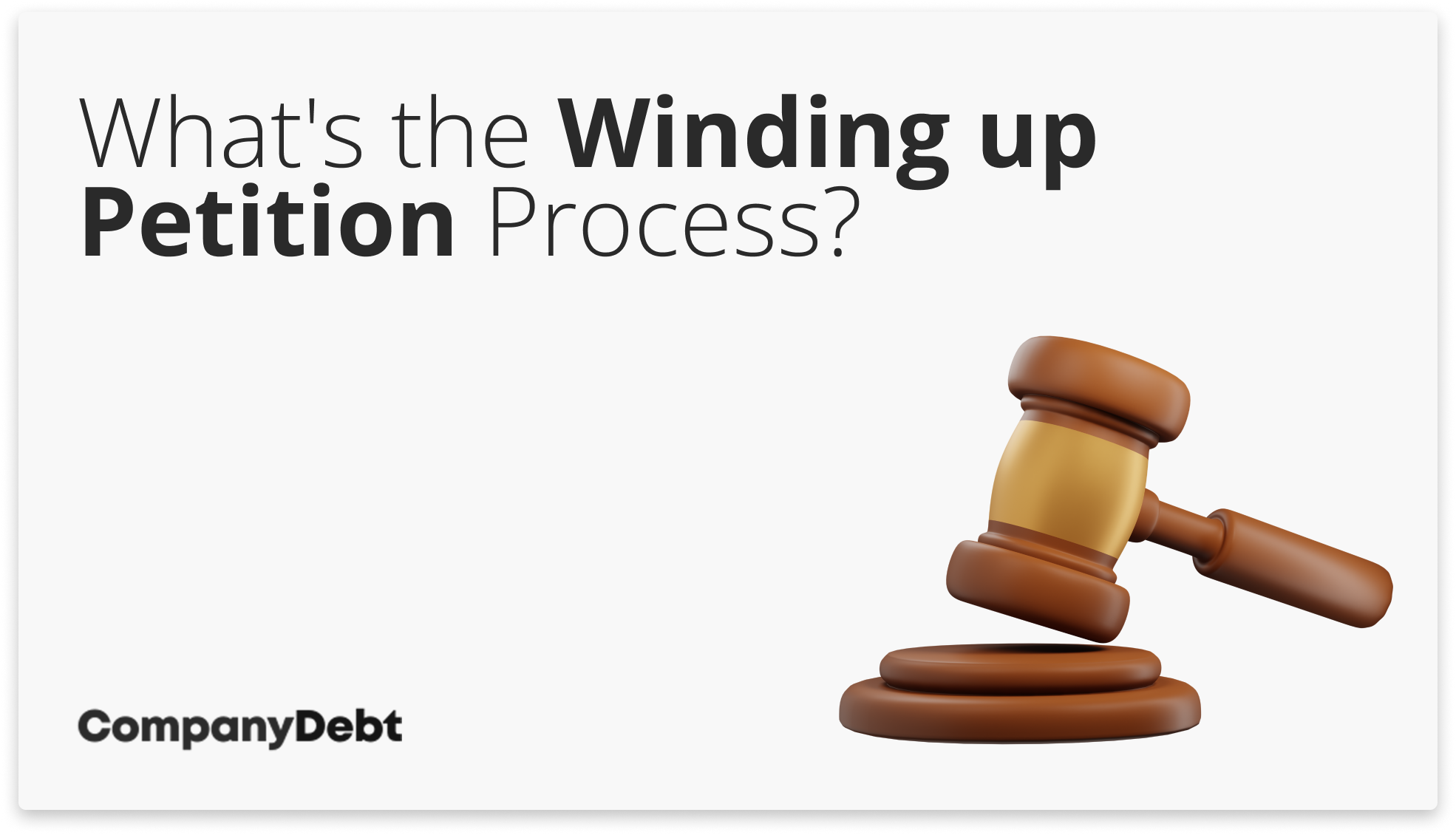
What’s the Winding Up Petition Process?
Winding up Petition Process
The process of winding up a company starts with the creditor’s decision to issue a winding up petition and ends with the distribution of the company’s assets to its creditors.
Understanding each step of the procedure is essential whether you’re a creditor considering this option, or a debtor company facing a petition[1]Trusted Source – GOV.UK – Chapter 3 of Part 7 of the Insolvency (England and Wales) Rules 2016 (SI 2016/1024).
Decision to File
This step is initiated after all other debt recovery methods have failed. Creditors must confirm that the outstanding debt exceeds £750 and weigh the nearly £3,000 cost associated with filing the petition.
If you’re considering filing a petition, you should be clear that once the company goes into liquidation, creditors will be paid according to a legal order of priority. If you’re an unsecured creditor, there’s, therefore, no guarantee you’ll get your money back, even if it was you who filed.
It will take a minimum of two months from filing until your case is heard in court.
Preparing and Filing the Petition
Creditors need to prepare a winding up petition using these forms and an affidavit to verify the debt. These documents are then submitted to the appropriate court based on the company’s share capital.
Before filing, you should check whether another petition is already in motion, or you risk losing your costs.
It’s advisable to work with a specialist insolvency solicitor to ensure due process is followed, including serving the documents on the debtor. Any deviation from the legally proscribed process might give the debtor grounds for challenge later on.
If the company’s paid-up share capital exceeds £120,000, send the petition to the High Court. If it is less, send the forms to the nearest court to the company’s registered office (court finder), as listed on the Companies House register.
Court Fees and Deposit
Filing the petition requires a court fee and a deposit to cover the winding up process costs, which may be recuperated if the company can settle its debts.
- Court fee: £302
- Deposit: £2,600 (recoverable if the company goes into liquidation and can repay)
Once filed, you will receive a Certificate of Service from the court.
Serving the Petition
The sealed petition must be officially served to the company at its registered office, main place of business, or directly to a company director.
Costs of Serving the petition: Approximately £150 plus VAT
Advertisement in the London Gazette
For transparency and to allow other creditors to come forward, the petition must be advertised in the London Gazette at least seven days after serving and seven days before the hearing.
Costs of Advertisement in the London Gazette: Approximately £80 plus VAT
Court Hearing and Outcome
The court sets a hearing date to consider the petition, where all interested parties can present their cases. The court may then issue a winding up order, adjourn, or dismiss the petition.
Liquidation and Distribution of Assets
If a winding up order is granted, an Official Receiver or insolvency practitioner liquidates the company’s assets. The proceeds are used to repay creditors according to priority, and the company is eventually dissolved.
This process is complex and requires careful consideration of legal requirements and potential consequences. Creditors are advised to seek professional advice to navigate this process effectively and ensure compliance with all legal obligations.

Winding up Petition Advice for Directors
If you’re a director dealing with the pressure of a winding up petition, remember you’re not alone. At Company Debt, our specialist team of insolvency practitioners is ready to provide you with the guidance and support you need during this challenging time. Whether you’re looking for ways to address the petition, explore alternative solutions, or understand the implications for your business, we’re here to help.
Don’t wait until it’s too late. Reach out to our experts today by phoning 0800 074 6757, using our live chat feature, or emailing us at info@companydebt.com. Let’s work together to find the best path forward for you and your company.
FAQs
How do you initiate a winding up petition?
To initiate a winding up petition, a creditor must first ensure that the debtor company owes at least £750. The creditor then prepares and files Form 4.2, the winding up petition, accompanied by an affidavit that verifies the debt, at the appropriate court based on the company’s share capital.
What is the process for serving a winding up petition?
Once the winding up petition is filed and approved by the court, it must be served on the debtor company. This involves delivering a sealed copy of the petition to the company’s registered office, or if necessary, to its main place of business or to a director personally.
How is a winding up petition advertised?
After the petition is served, it must be advertised in the London Gazette at least 7 days before the court hearing and no earlier than 7 days after it has been served. This advertisement is to inform other potential creditors of the petition and the scheduled court hearing.
What happens during a winding up petition hearing?
At the hearing, the court reviews the petition and the evidence presented by the creditor. The debtor company can also present its defence. The court then decides whether to issue a winding up order, dismiss the petition, or adjourn the hearing for further consideration.
The primary sources for this article are listed below, including the relevant laws and Acts which provide their legal basis.
You can learn more about our standards for producing accurate, unbiased content in our editorial policy here.
- Trusted Source – GOV.UK – Chapter 3 of Part 7 of the Insolvency (England and Wales) Rules 2016 (SI 2016/1024)






